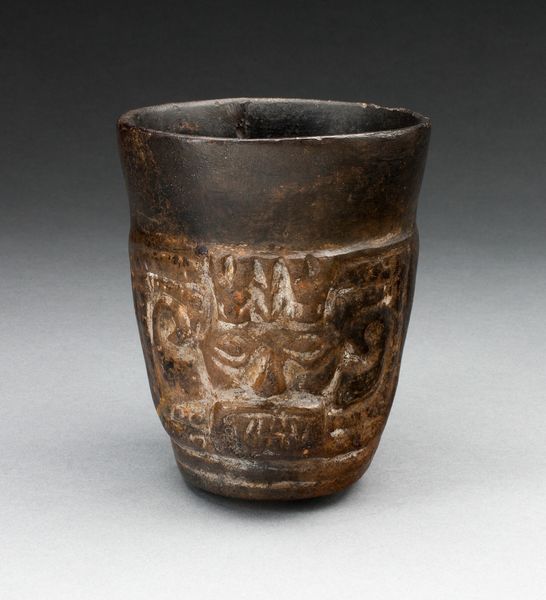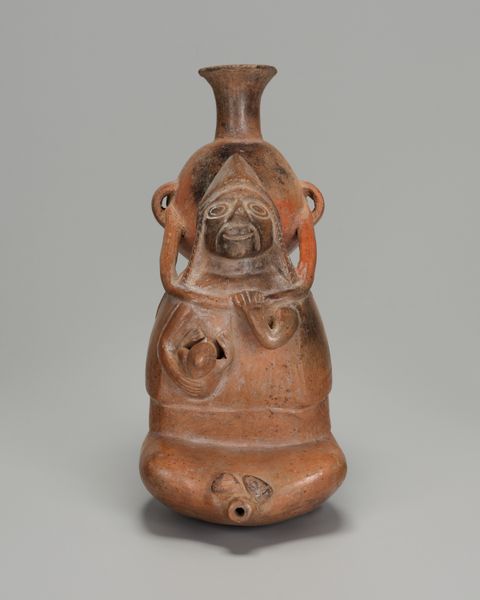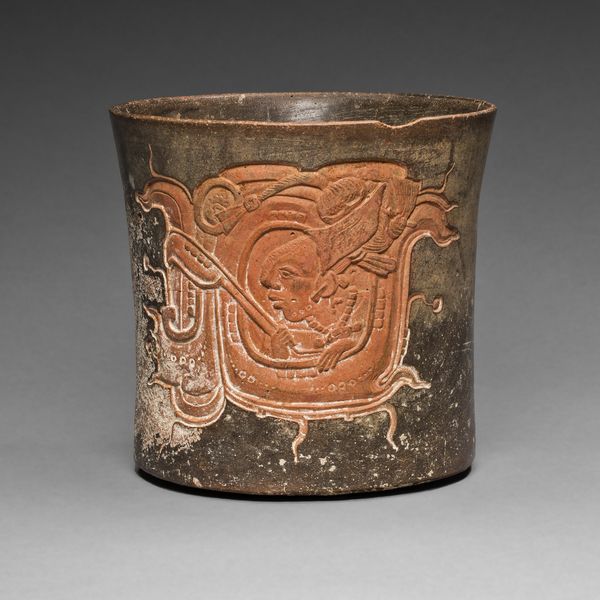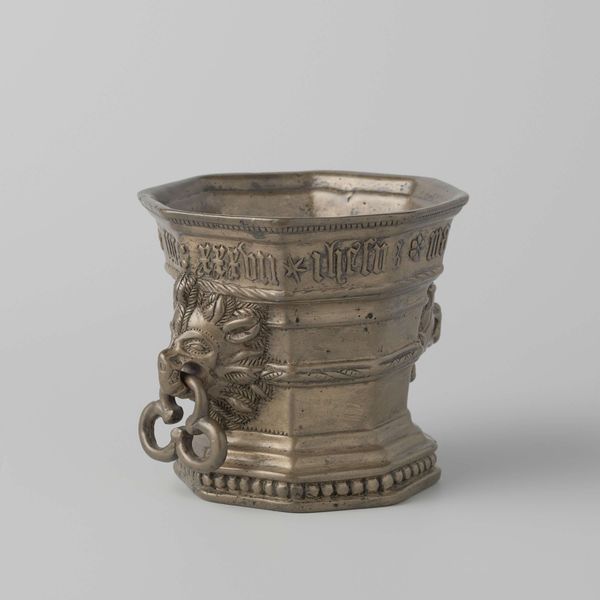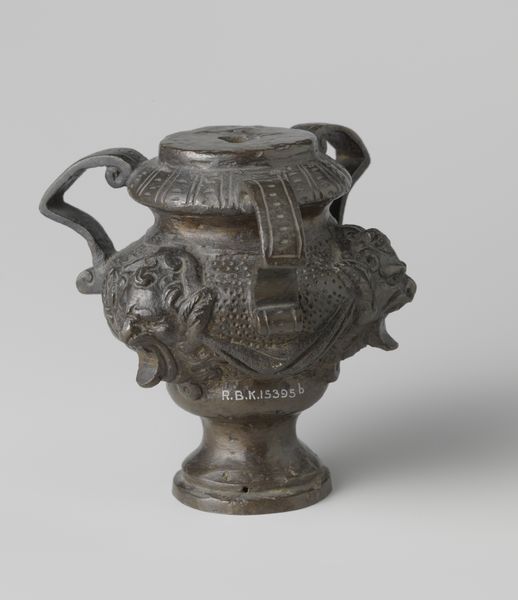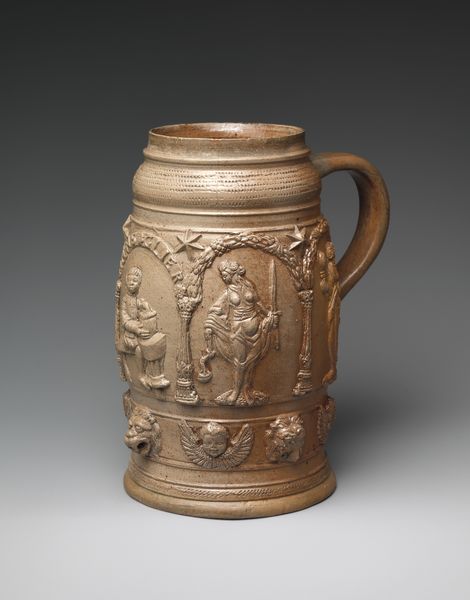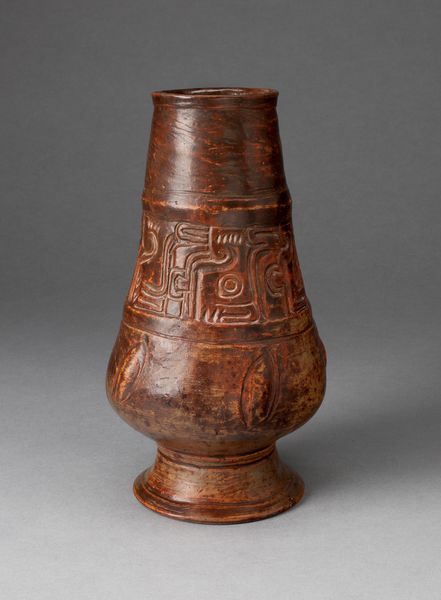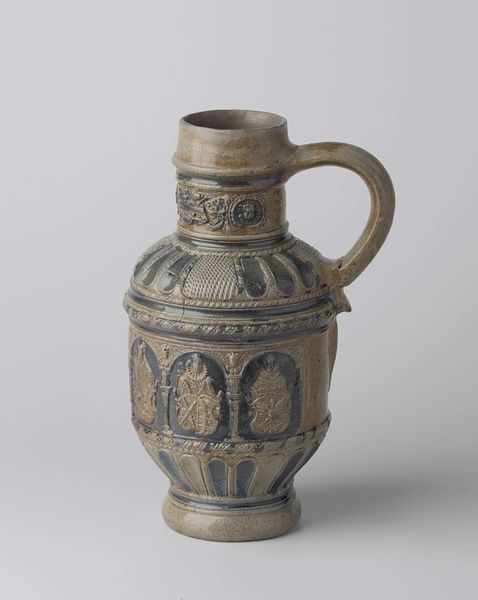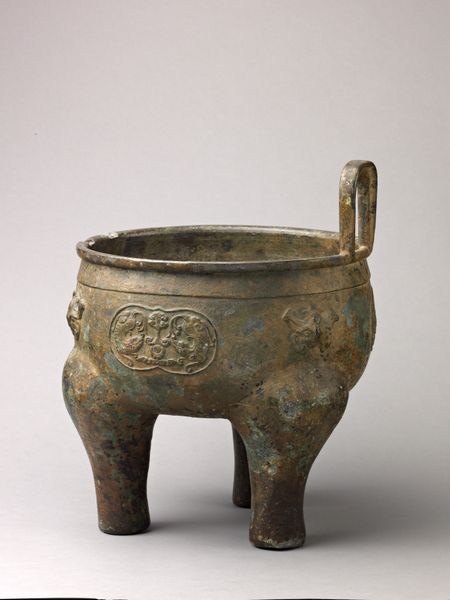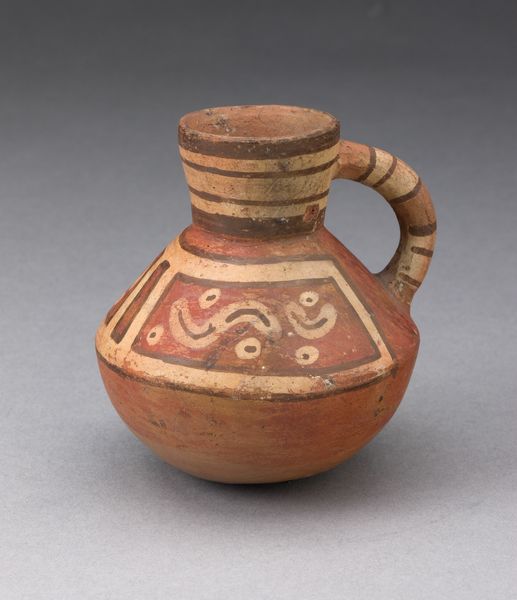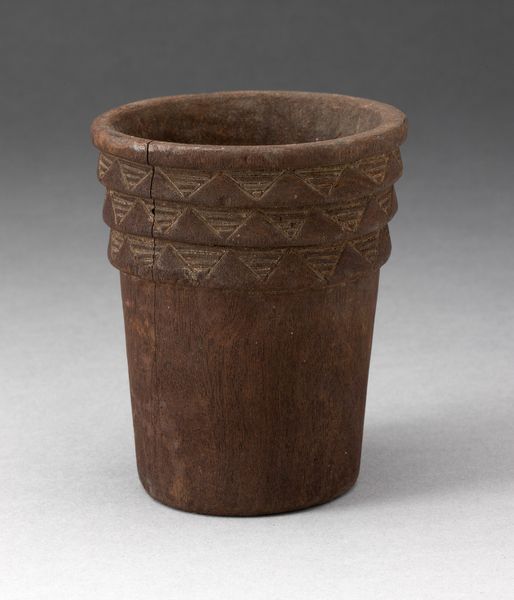
carving, ceramic, bronze, sculpture
#
medieval
#
carving
#
ceramic
#
bronze
#
mannerism
#
11_renaissance
#
sculpture
#
ceramic
#
decorative-art
Dimensions: Overall (confirmed): 7 1/4 × 7 7/8 × 6 3/4 in. (18.4 × 20 × 17.1 cm)
Copyright: Public Domain
Curator: Welcome! Before us, we have a bronze mortar from 1603, created by Caspar Gras. The piece, residing at the Metropolitan Museum of Art, showcases an animal frieze and intricate decorative art representative of the Mannerist style. Editor: Whoa! Immediately I'm struck by the juxtaposition of raw utility with almost baroque ornamentation. It’s like finding a gargoyle on a garden gnome! Bronze always gives me a feeling of permanence, of legacy, but then those cute, almost cartoonish animals frolicking around it feel so playful. It’s unexpectedly whimsical, wouldn’t you say? Curator: Indeed. The seemingly frivolous animal frieze exists within a broader historical context. Apothecaries and physicians frequently commissioned such mortars. Decoration wasn’t mere fancy; animals held symbolic weight related to healing and ingredients. The placement within domestic and medical spheres also highlights the blending of art and functional objects in the early 17th century. Editor: Fascinating! I love knowing there’s a hidden language. Makes me want to decipher it. Each creature meticulously rendered, adding a layer of narrative to a vessel meant for grinding herbs, crushing perhaps symbolic elements? It transforms something practical into a cabinet of curiosities, really. It’s almost… alchemical? Curator: Precisely. Alchemy was intrinsically linked to both medicine and art at this time. The transformation of base metals was mirrored in the creation of potent medicines. Consider, too, the artist's background, Gras's connections within courtly circles could suggest that this object, seemingly simple, represents greater power and patronage dynamics. Editor: A mortar as a microcosm! Gras really transformed mundane metallurgy into something brimming with vitality. Knowing it’s touched by alchemical ideas, the artist's social standing... It shifts how I see it. That sense of playful joy gains layers. Almost a sneaky knowing. I wonder what stories this bronze body could tell... Curator: This seemingly simple mortar invites layered interpretations— a testament to the rich socio-cultural meanings imbued within early 17th century decorative arts. Editor: And I can't help but feel that blending practicality and art elevates life... finding beauty and intrigue in the everyday. Bravo, Gras.
Comments
No comments
Be the first to comment and join the conversation on the ultimate creative platform.

